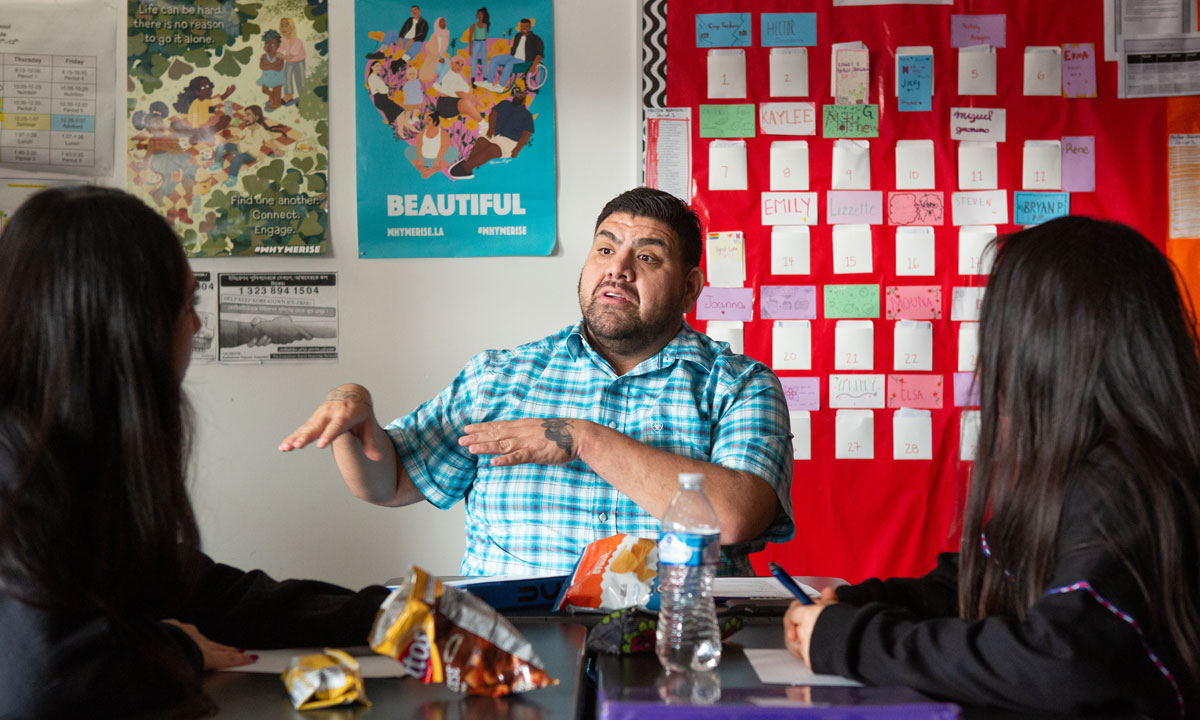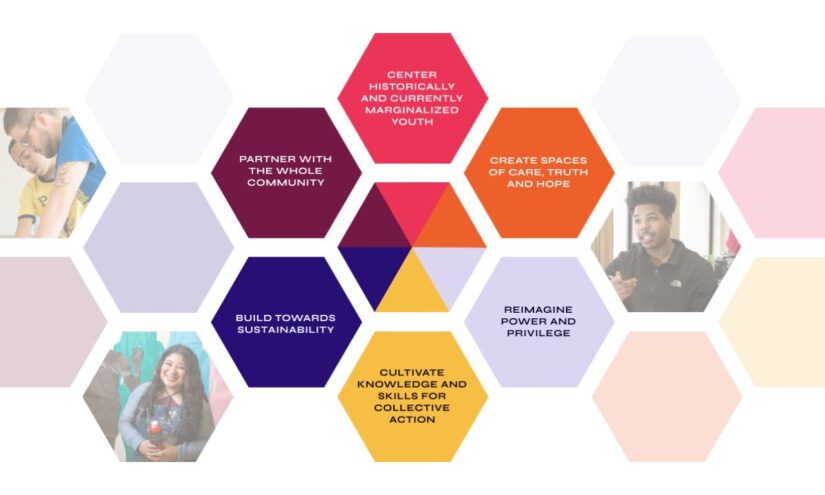Case Studies: 6 Principles for Using Student-Powered Improvement in Your School
Nelsestuen: If schools are to improve so they can more successfully serve students, what better way than to involve students directly in the process?

Get stories like this delivered straight to your inbox. Sign up for The 74 Newsletter
In a small conference room off the main office of a large high school near Tulsa, Oklahoma, eight students gathered with a language arts teacher and a youth development specialist to identify a problem that they could tackle in their school. Students immediately talked about the mental health crisis among their peers. “When hard things are happening in our lives, we’re just told to try harder and do better,” said one student. “I don’t talk about how I’m feeling anymore.”
The two adults showed students a strategy for naming root causes of poor mental health. They passed out colorful sticky notes, and students began posting suggestions on a whiteboard, building off one another’s ideas. Soon, the board was full. The root cause that the group decided to work on first was the shaming of students. As one described it, “Adults tell us what we do wrong, but never what we do right.”
After a lengthy and lively discussion, the students decided on an initial course of action: to flip the script of the school’s morning announcements. The practice was to announce the percentage of students who had not yet passed various state assessments. The students wanted to focus on what was going well by announcing the passing rates instead. They chose this problem first because the solution could be designed and tested right away — a quick win — and because they predicted it would positively impact their peers’ motivation to do well academically. With support from administrators, they put their plan into action and then surveyed students about whether they noticed the change. Many did. That success launched the team forward toward designing more changes.
This story illustrates one example of student-powered improvement, an approach where adults in schools redesign school systems with, rather than for, students. Over the past three years, Community Design Partners‘ facilitators, coaches and advisers have trained educators from over 300 schools and organizations to do this important work. They also host events like design sprints, where educators and students examine a problem and design solutions together; help measure outcomes; and tell success stories. Ultimately, the goal is to enable educators and students to sustain these initiatives themselves.

Student-powered improvement is not a single program or model. Rather, it is an approach that is driven by six guiding principles and occurs along a continuum, from empathy and involvement to shared decision-making and implementation of student-led improvements. Here are some examples from our archive of case studies:
- Empathizing with students means that adults try to deeply understand their experiences, perspectives and feelings and use what they learn to change how things work. For example, teams of teachers, counselors and administrators from several high schools near Seattle wanted to increase the percentage of graduates who were prepared for college and careers. They conducted regular interviews with students who were likely to be admitted into college but less likely to enroll. The teams asked questions like, “Tell me about a time an adult has talked to you about your future” and, “What’s the best and worst part about being a senior?” After analyzing the responses, one counselor said, “The interviews have helped us close the gaps between the support we thought we were giving and the support students told us they were actually receiving.” Creative ideas emerged, such as using Google Voice for texting students and holding Zoom office hours for seniors.
- Involving students means engaging them in working with adults to improve the school, such as prioritizing which problems to focus on or designing and testing solutions together. For example, 23 Baltimore middle and high school students joined 11 teachers for a Design Camp in the early days of the pandemic. Over the course of a week, they spent 13 hours sharing their experiences, priorities and perspectives. Together, they designed new ways to strengthen engagement and connection during virtual learning, such as “Tea Time” — a regular check-in on emotional wellness that strengthened understanding of one another’s lives.
- Sharing decision-making means students play a leadership role and have real power. For example, students in California joined a budget committee in a district that faced looming cuts. They learned about the budgeting process and decided they needed more information, so they designed a school climate survey for their peers across the district. After analyzing the data, the students voted to use a percentage of funds to support restorative justice practices.
- Implementing youth-led improvements means that student groups are in charge of these efforts, from determining their areas of focus to carrying out those changes. For example, rural and suburban districts in Oregon sponsored a network for over 50 high school students. They focused on improvements to help ninth-graders be on track to graduate. They interviewed peers about their ninth-grade experiences and, based on those findings, designed solutions like mental health kits, increased classroom discussions about race and virtual spaces, such as Zoom, for connecting.
An important aspect of these efforts is to place a priority on including students who have historically been marginalized. For example, in the opening story, the teacher worked with Impact Tulsa, a regional nonprofit with expertise in the student-powered improvement efforts, to learn about strategies to bring in a diverse group. The cohort of eight included students who identified as Black, Hispanic, Native American and white and had diverse gender identities.
Educators across the country who have adopted a student-powered improvement approach to change describe several key benefits. When done over time, educators report that this work is transformational for both students and teachers, providing an increased sense of empowerment and engagement within the classroom and throughout the school. For the students and those who benefit from their ideas, there is an increased sense of inclusion and belonging. Ultimately, the approach results in solutions that are more likely to effectively address students’ needs.
To get started, educators at hundreds of schools have taken a short assessment and received customized results on the student-powered improvement website.
If schools are to improve so they can more successfully serve students, what better way than to involve students directly in the process? As one student from the opening story wrote at the end of the year, “I feel more validated and important to the school and community now.” Another wrote, “I’m excited to make a genuine difference.”
Get stories like these delivered straight to your inbox. Sign up for The 74 Newsletter

;)
